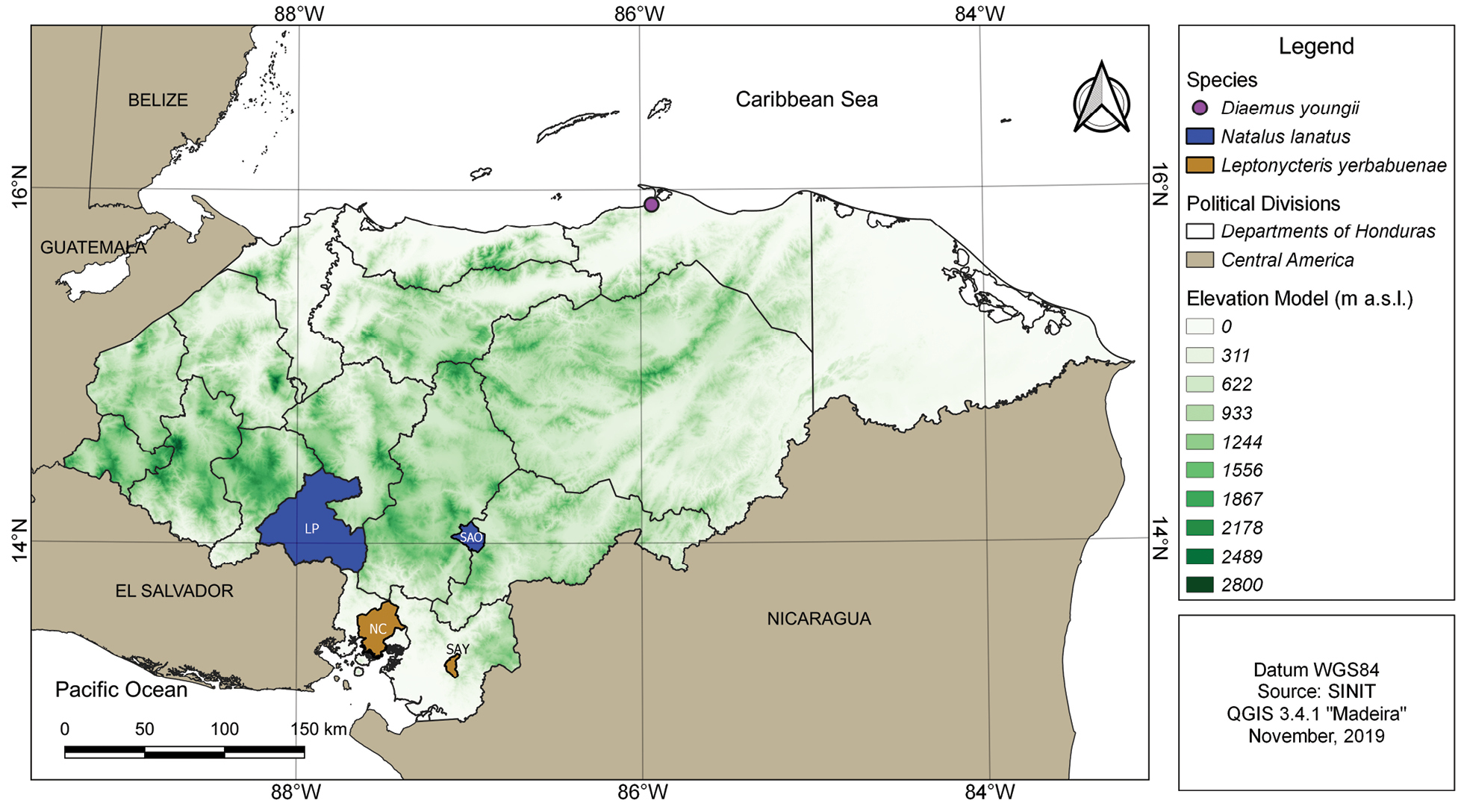
|
||
|
Map with new records of D. youngii and N. lanatus for Honduras. None of the previous records (except D. youngii) have exact coordinates, however, we shaded the municipality on each department in which they were recorded. The blue shaded area indicates the localities of N. lanatus captured in the municipality of Zamorano (municipality of San Antonio de Oriente) in the department of Francisco Morazán in central Honduras, and in La Cueva del Viejo in the department of La Paz in western Honduras. The big yellow-shaded area refers to two localities in which L. yerbabuenae was recorded in the municipality of Nacaome in the department of Valle in southern Honduras by Lee and Bradley (1992) and R. D. Bradley in 1991 (GBIF.org 2019). The small brown-shaded areas in southern Honduras refer to the localities in which M. Sandiford reported one L. yerbabuenae from the municipality of Santa Ana de Yusguare in the department of Choluteca (GBIF.org 2019). Finally, the purple point refers to the exact location of D. youngii recorded in the department of Colón in northeastern Honduras. Abbreviations as follows: La Paz (LP), Nacaome (NC), San Antonio de Oriente (SAO), and Santa Ana de Yusguare (SAY). There is no specific area highlighted in La Paz because there are several caves known as Cueva del Viejo. |